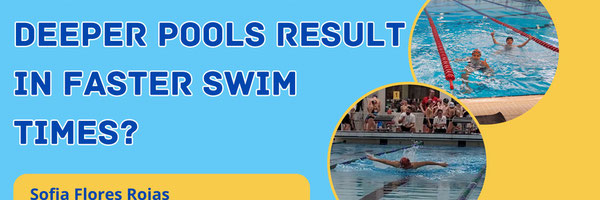Fact or Myth: Do Deeper Pools Result in Faster Swim Times?
Grade 7
Presentation
No video provided
Hypothesis
If the depth of a pool is greater, then a swimmer’s time in a specific stroke will be faster, because greater depth absorbs the turbulence that is caused by drag when swimming, therefore shallower pools increase times.
Research
Definition: The resistance pull of a fluid.
Swimming has two main components:
- The velocity as a swimmer (how effective your kick, stroke and streamline position are)
- The drag of your body in the water that pushes you back
Types of a Drag Force :
- Friction Drag
- Wave Drag
- Form Drag
A drag force acting on a body that is moving at the interface of two fluids.
*Image created by: Sofia Flores
In shallow pools the waves that are generated from the constant motion of the strokes bounce off the bottom of the pool and reflect back the swimmer causing turbulence and slowing them down .
*Image created by: Sofia Flores
In deeper pools however, after the waves bounce of the bottom of the pool they dissipate and reduce drag allowing swimmers to glide more effortlessly.
Table 1: Comparison of Active Drag and Swim Technique between Freestyle, Backstroke and Butterfly.
|
Freestyle |
Backstroke |
Butterfly |
|
50.47 Active Drag Force |
51.65 Active Drag Force |
61.51 Active Drag Force |
|
Streamline stroke |
Streamlined stroke |
External sweep, end of internal sweep, end of thrust |
|
Fastest stroke |
More surface swimming |
Fastest after freestyle |
|
Smoothes entry |
Unique and non- smooth entry |
Creates the most turbulence |
To better understand drag force and the physics of swimming , I decided to contact an expert. Miranda is both a compettive swimmer and swim coach , so she has a greater understanding of the fundamentals and technique of swimming. Miranda would also provide an instight to how my project could possibly be improved .
Q: Tell me more about yourself:
My name is Miranda Mountain I swam competitively for 3 years in the Netherlands as well as throughout my high school career and swam recreationally at Mount Royal. I have been a swim instructor with the City of Calgary for over 10 years coaching Junior Lifesaving Club (JLC)and teaching bronze courses for pre-lifeguarding. I also helped coach the Lester B Pearson swim team for 2 years.
Q: Which stroke do you believe is the fastest and why?
Freestyle , most people learn this stroke first so they work on it the longest throughout their swimming time ; it also has the smoothest entry (enter with the tips of your fingers) with the most potential to maximize underwater time to help propel you to go faster (an effective pull and constant kick) as well as a traditionally streamline position (head down body in a straight line with rolling shoulders and body) to reduce drag pushing you back.
Q : What is drag force in swimming?
Drag force in swimming is two parts: the velocity as a swimmer (this is body position, how effective your stroke and kick are) and the drag of your body in the water that pushes you back (body position, swim suit, whether or not you have a swim cap etc.). For example in freestyle a constant kick with a stroke pull and
a body roll will help increase your velocity by pulling the water effectively pushing you forward faster aided with a constant kick and the body roll will help control the waves you make as well as helping you move more streamline through the water keeping your head down and body horizontal which allows you to reduce the drag of the water pushing you back. When swimming you are constantly combating the drag you have in the water based on: the waves you make, how streamline you are as well as your swimsuit and swim cap etc., which creates friction between your body and the water, with your velocity and how fast you can move yourself through stroke and kick as well as reducing your drag in the water with a tight fitting swimsuit, swim cap, and streamline body position (as straight and small as possible) the faster you will be overall. The goal is to be fast moving but also reduce how much drag you have against you in the water as well. Breast the water. The faster you can move yourself through the water with an effective stroke is characteristically slower since you have flared knees and elbows for portions of the stroke as well as a kick that brings your knees out (increasing your drag in the water) to a streamline position which effectively shoots you forward the idea being you would increase your drag temporarily to gain a large speed boost. This is also why you see so much focus on swimsuits, swim caps, reaching your arms forward and an underwater pull. Also why there is a cap on how far you can swim underwater off the block and how far your start can be as swimming underwater is significantly less drag and faster than swimming at the surface.I would agree with your hypothesis more than just velocity or drag but also humans in shallow water , many people can start to overthink eg. Affecting their entry as well as how deep they are in the water. Typically swimmers try to be at the surface for the most effective strokes but a shallower pool than you are used to affect your perception of your body position in the water. I would also assume that more water (deeper pool) would help you reduce drag affecting the waves you create as well as affecting your velocity since there is more water to work with in deeper pools.
Q : Do you think repeating the experiment again would be beneficial to the data in my experiment?
No , I think your data shows the differences. I would only repeat if you had the opportunity to adjust variables eg. If you had more time (you could do one swim at a time) or similar equipment meaning the same set up just with different depths.
Q : Do you think that perhaps human exhaustion was a factor in my experiment?
For sure , I see it all the time. This is why I always do time swims at the start of a lesson vs. at the end. Human exhaustion will lead to sloppy stroke technique which affects how fast you can propel yourself as well as compromising body position which increases the drag against you.
Q: How much time could you reduce from using a diving block instead of the edge of the pool?
You also asked about equipment for sure equipment will affect your times. With a block you would probably shave off 1-3 seconds depending on the swimmer and how effective their start is. In my experience with my swim team we saw normally about a 2 second difference being faster with a block start. A turn can be affected by wall type as well as the swimmer (are they strong in this stroke, is their turn strong?)
Variables
Experimental Variables
|
Manipulated (Independent) Variable |
Responding (Dependent) Variable |
Controlled Variables |
|
|
|
Procedure
In order to obtain 9 sets of comparable data:
- Selected participants: 3 swimmers from Grey Squad - Competitive swimming.
- 2 meters times vs 3 meters times
2 meters depth times: Previous swim meet times (Canmore, Elevation Place )
3 meters depth times: Gather swimmers at Seton YMCA
- Swimmers performed three strokes for 50 meters: Freestyle, Butterfly , Backstroke.
- Each 50 meters event was timed with two stopwatches to ensure accuracy
- 5 minutes breaks were taking in between events. ( Avoid Exhaustion )
- Data was collected and compared in Excel.
Observations
Table 2: Data collection
| 50 m Butterfly | 50m Backstroke | 50 m Freestyle | |||||||
| Canmore | Seton | Difference | Canmore | Seton | Difference | Canmore | Seton | Difference | |
| Sofia .FR | 59.79 | 54.73 | -5.06 | 54.85 | 50.935 | -3.915 | 41.91 | 41.7 | -0.21 |
| Owen.Percival | 62.1 | 56.95 | -5.15 | 47.66 | 46.435 | -1.225 | 39.56 | 39.5 | -0.06 |
| Sophie Burger | 47.5 | 53.2 | 5.7 | 45.89 | 44.21 | -1.68 | 40.5 | 40.6 | 0.1 |
| *Canmore pool: 2m deep | |||||||||
| *Seton pool: 3m deep | |||||||||
- The heaviest swimmer was most impacted by the 3 meter pool (thier times decreased significantly)
- 75% of the time (in all strokes), times decreased in the 3 meter pool.
Images: Canmore Pool - October 2024
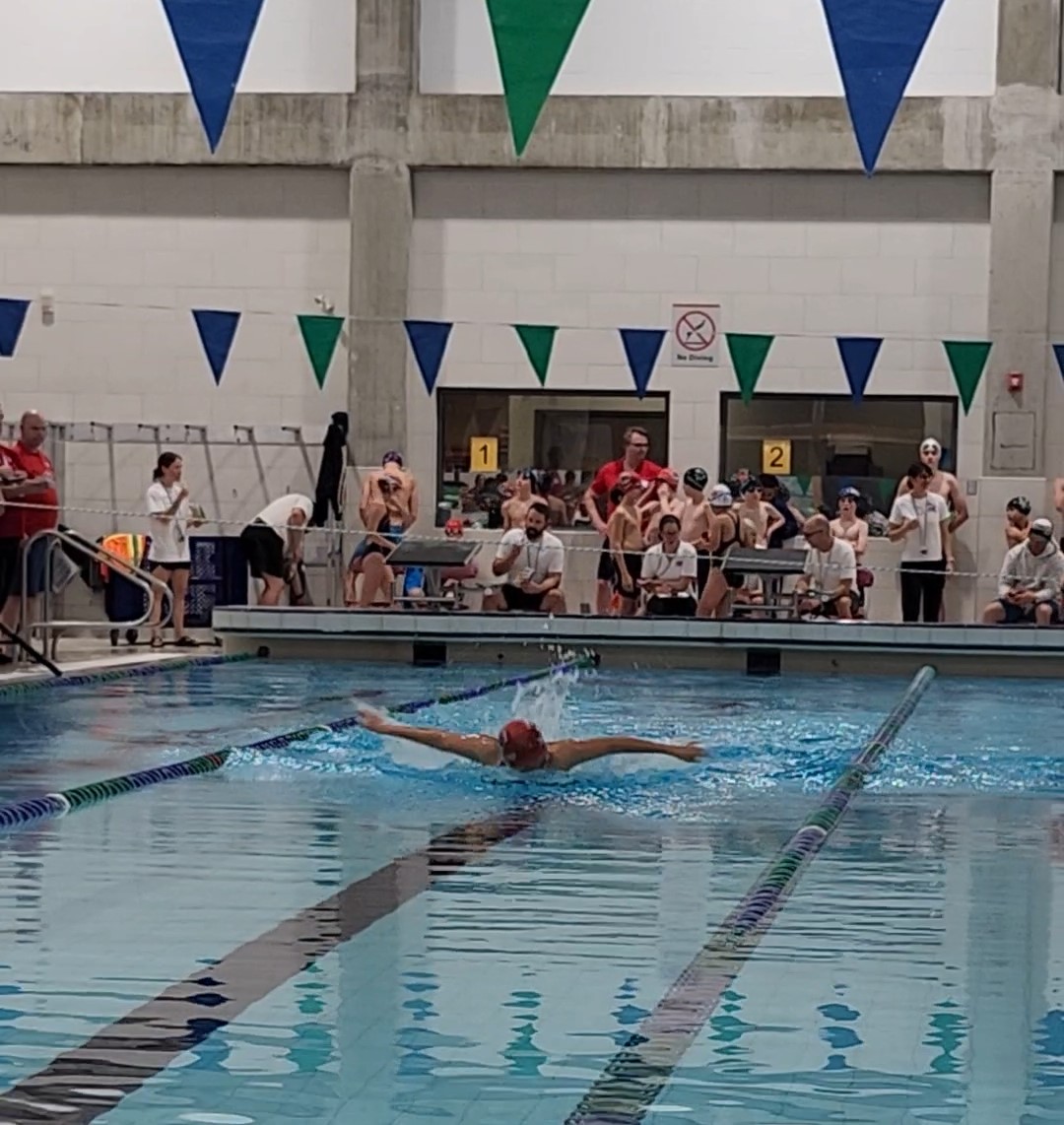
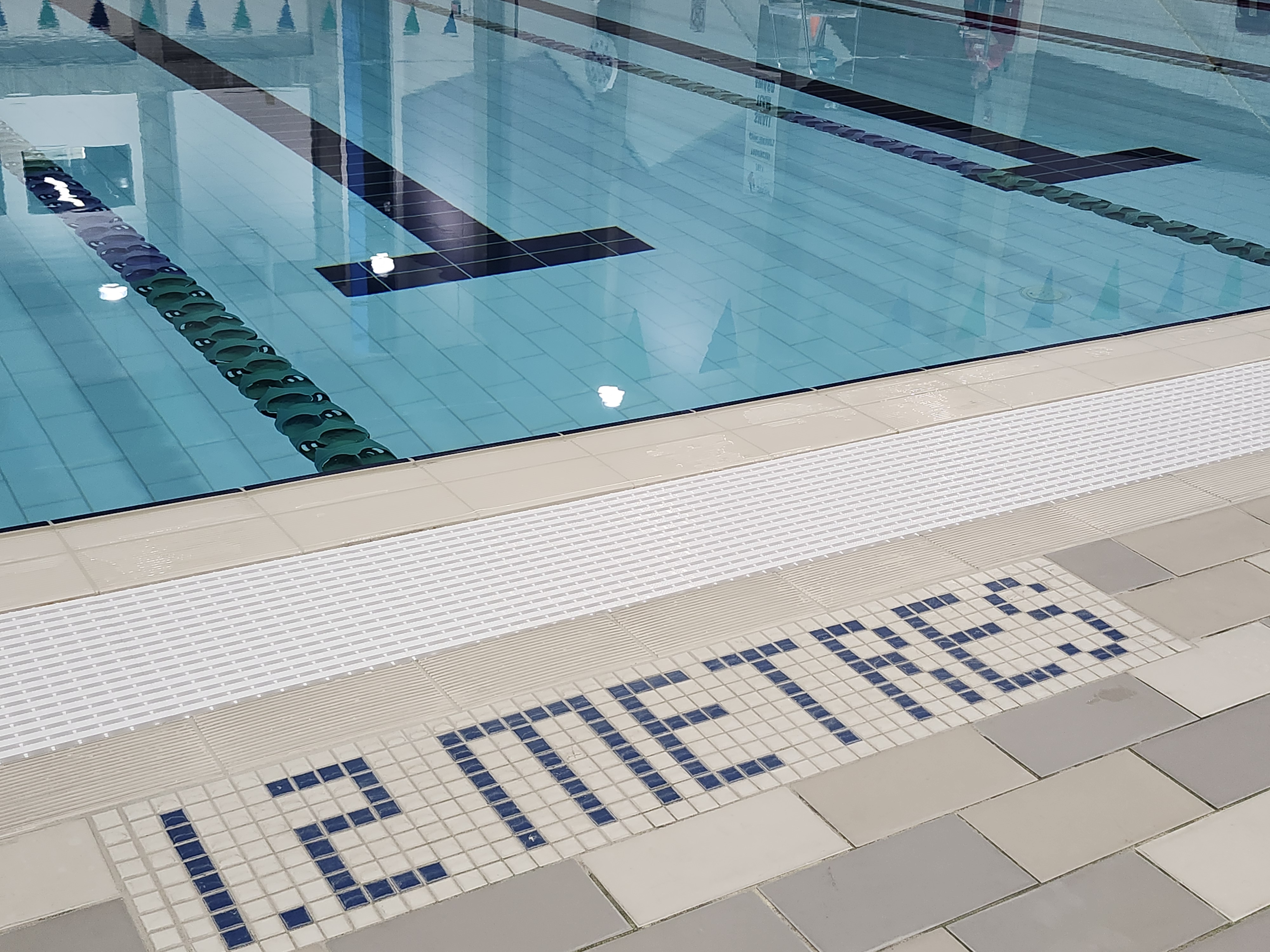
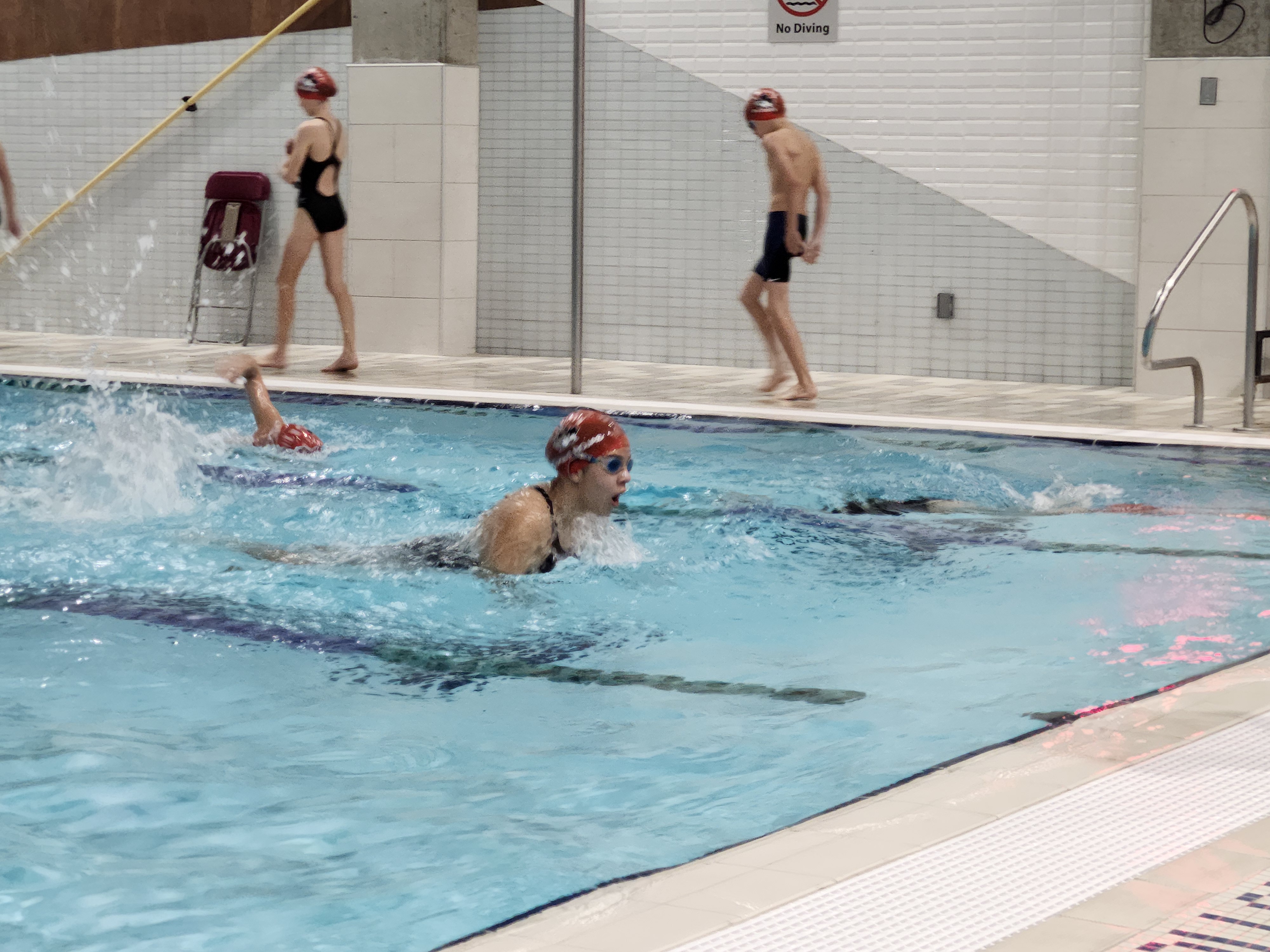
Images: Seton Pool - December 2024
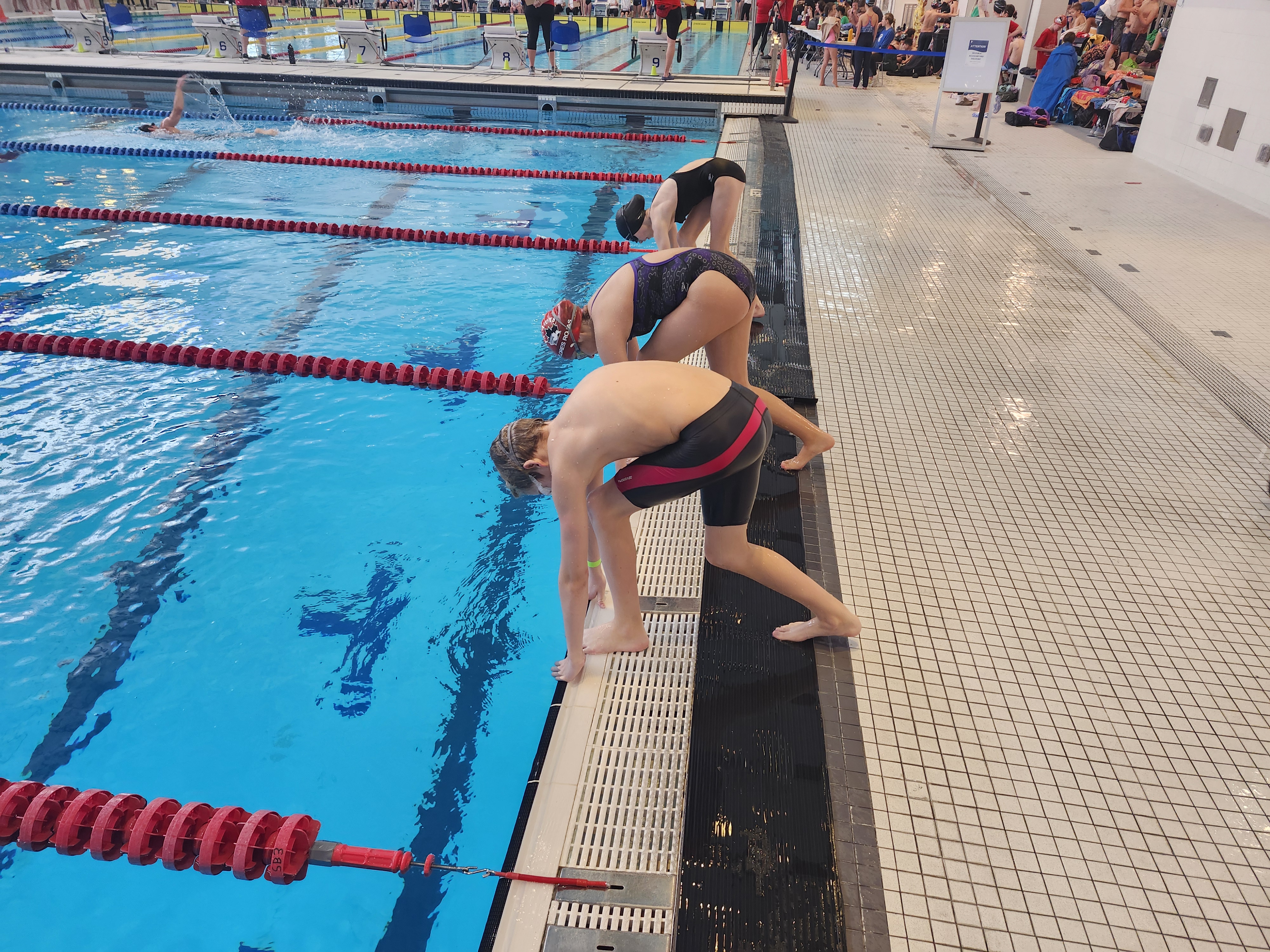
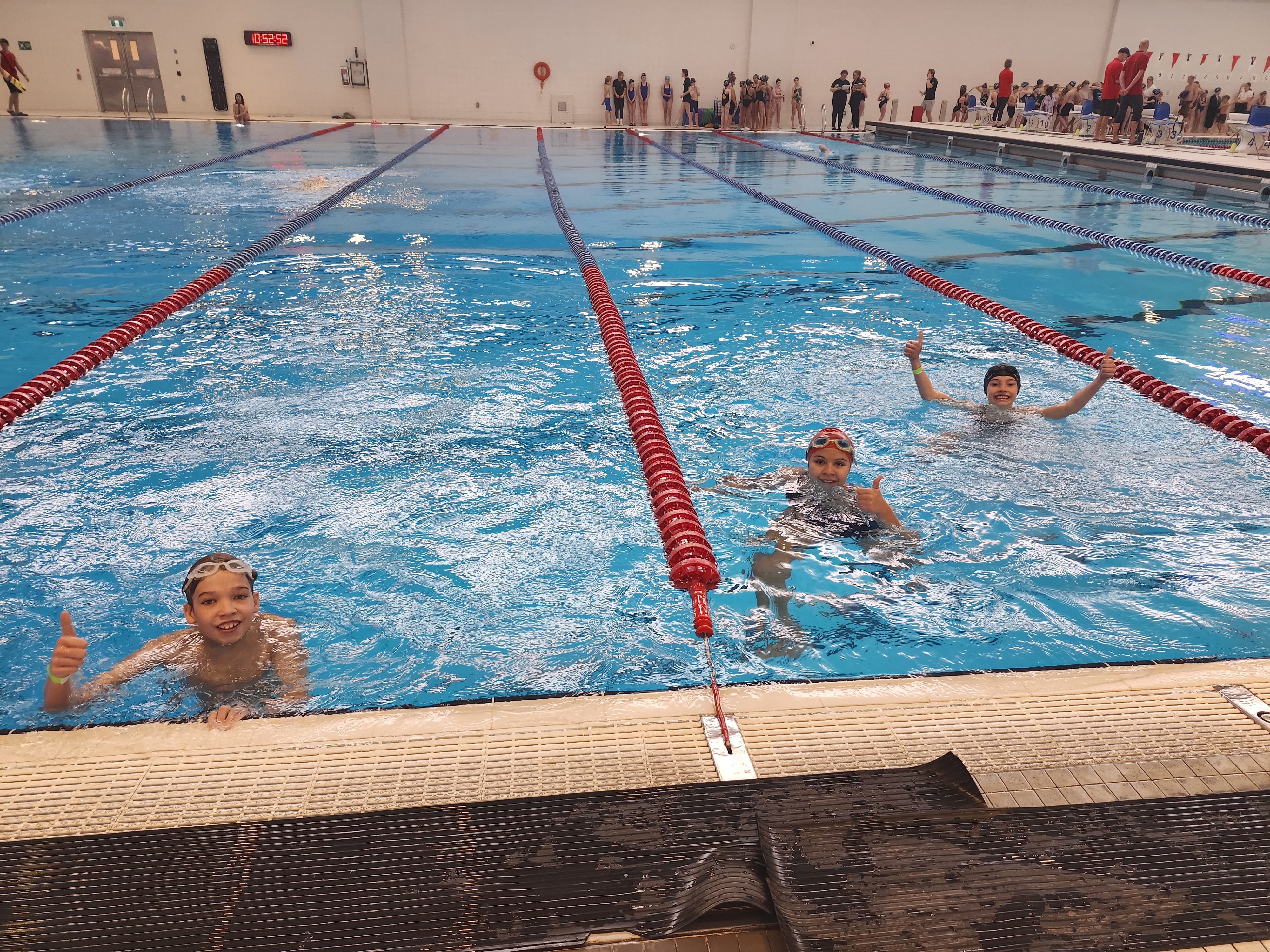
Analysis
Freestyle
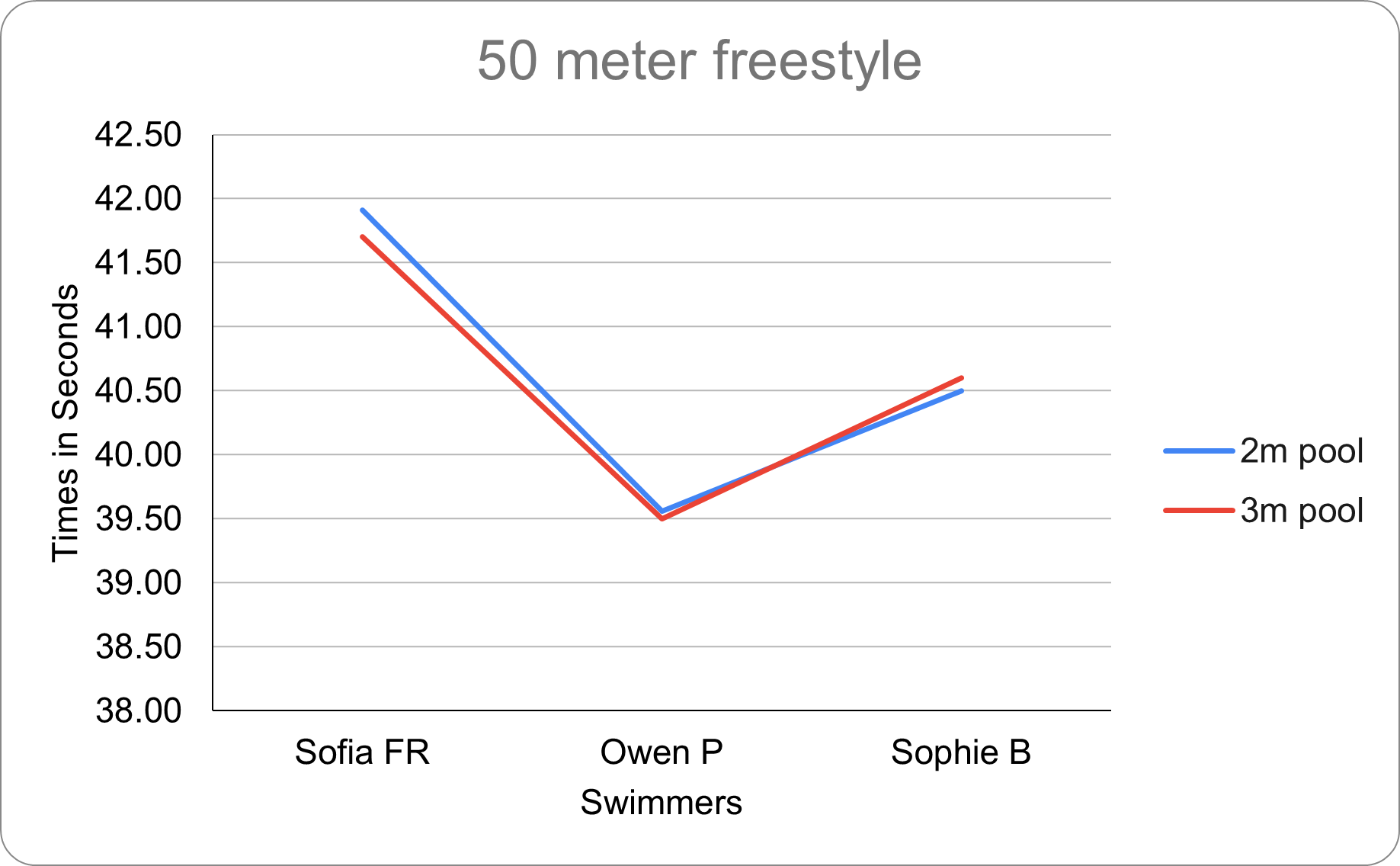
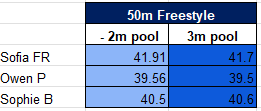
- Not a significant amount of difference was seen between the 2m and 3m pools
- Freestyle also had the least amount of active drag force , which means that it'll be the least affected by the change in depth.
- If freestyle creates the least amount of drag force (turbulence ) and deep pools reduce turbulence, then freestyle will notably the stroke with the least amount of difference between times .
Backstroke
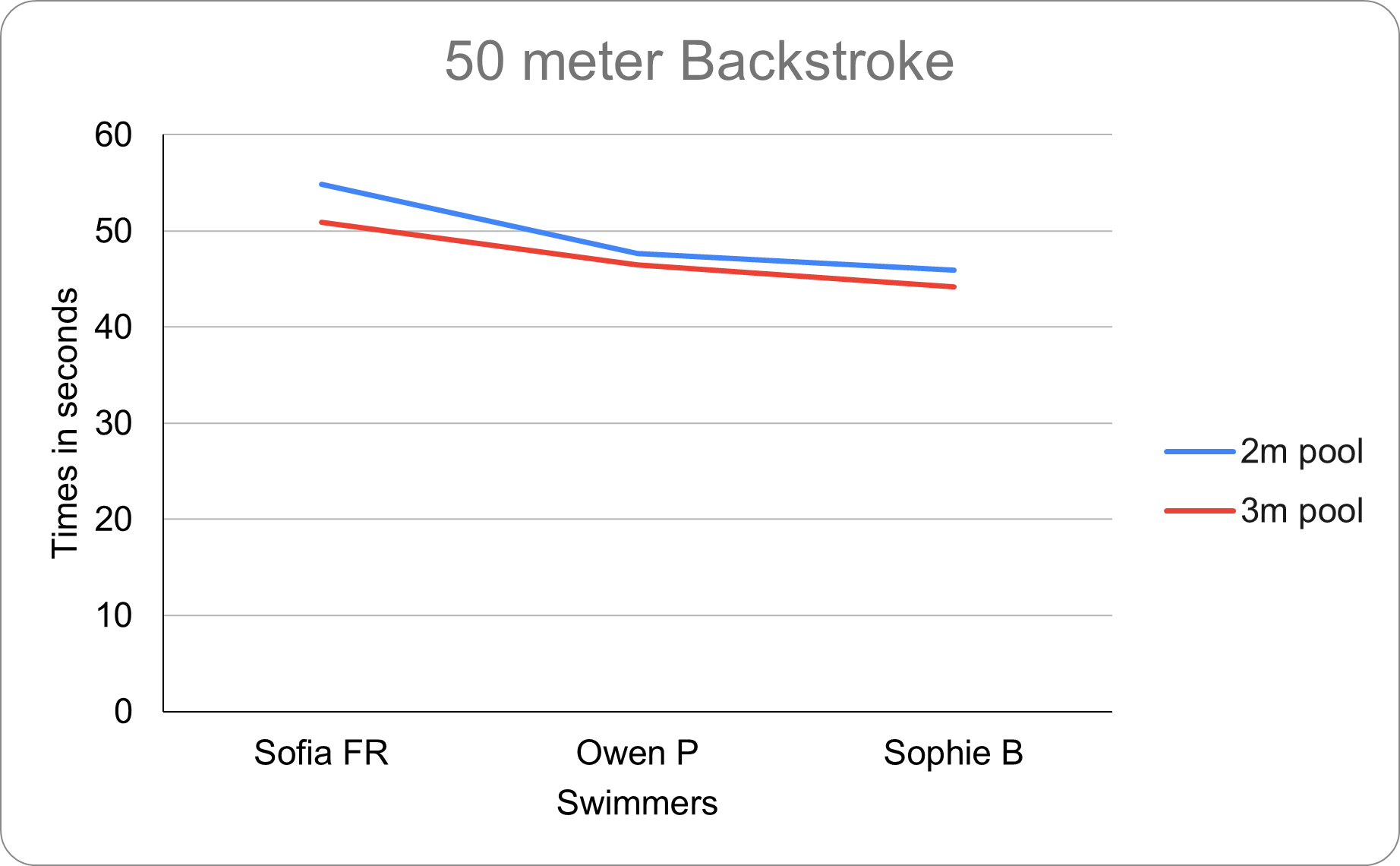
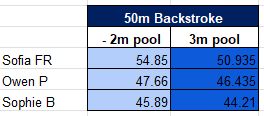
- Backstroke had a noticeable difference between the 2 meter vs the 3 meter
- 2 out of 3 swimmers improved their times.
- With backstroke having an active drag force of 51.65 that was slightly higher than the previous stroke.
Butterfly
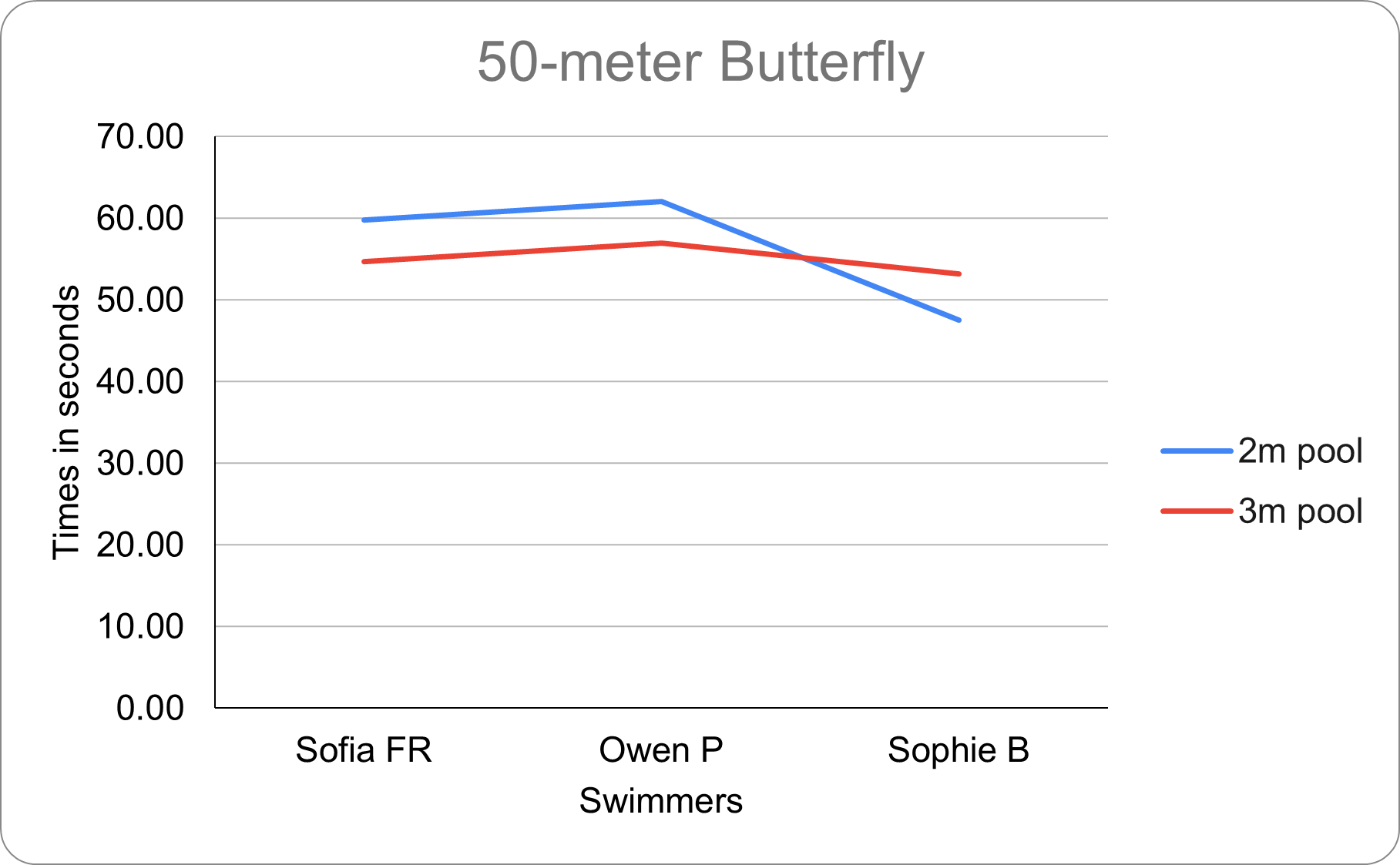
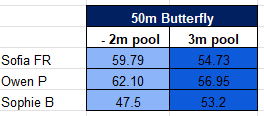
- Very similar times in the Backstroke and Free, but has a very notable difference in Fly.
- 2 out of 3 swimmers improved their times.
- With an active drag force : 61.41 , butterfly has a significantly higher drag force than the other two.
- Butterfly is likely the most unique of the three stroke that I used in my experiment, with both arms coming out of the water simultaneously
My experiment has nine repittitions to ensure that my theory wasnt only applicable to a single stroke, such as freestyle. The amout of active drag force that each stroke pulls has is unique, so the amount of decreased time will differ.
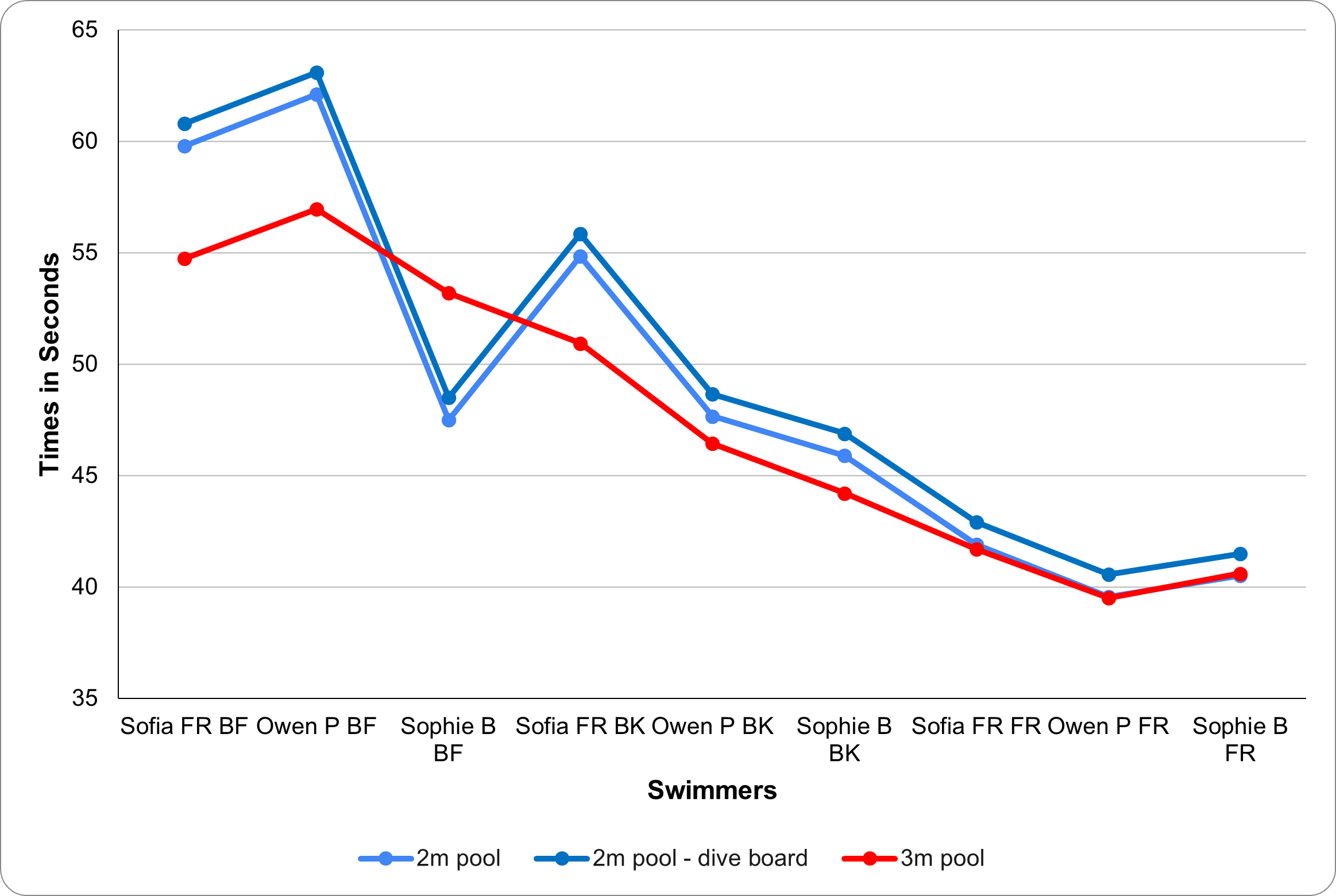
| 2m pool | 2m pool - dive board | 3m pool | |
| Sofia FR BF | 59.79 | 60.79 | 54.73 |
| Owen P BF | 62.1 | 63.1 | 56.95 |
| Sophie B BF | 47.5 | 48.5 | 53.2 |
| Sofia FR BK | 54.85 | 55.85 | 50.935 |
| Owen P BK | 47.66 | 48.66 | 46.435 |
| Sophie B BK | 45.89 | 46.89 | 44.21 |
| Sofia FR FR | 41.91 | 42.91 | 41.7 |
| Owen P FR | 39.56 | 40.56 | 39.5 |
| Sophie B FR | 40.5 | 41.5 | 40.6 |
This graph shows the differnce when comparing the Canmore times to the 3 meter ( Seton ) pool times . Canmore is represented as the dark blue line and the red as the 3 meter pool. It shows a substantial decrease throughout the nine repetitions with onnly a few outliers . In addition , the light blue line represents the 2m pool without the diving board, adding 1 second . My graph accurately represents the variables in my experiment in a more comprehendable way.
Bar graph :
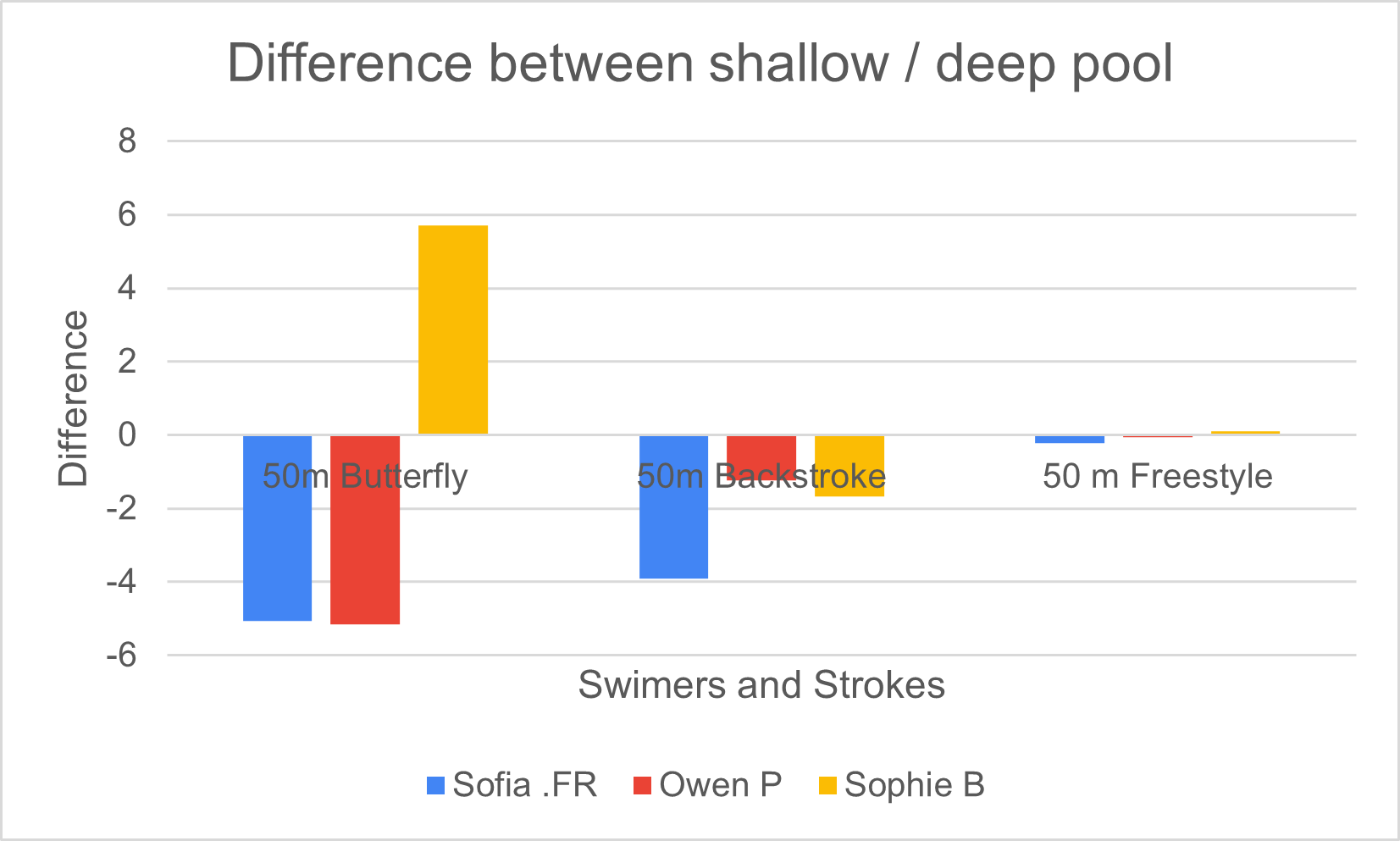
| 50m Butterfly | 50m Backstroke | 50 m Freestyle | |
| Sofia .FR | -5.06 | -3.915 | -0.21 |
| Owen P | -5.15 | -1.225 | -0.06 |
| Sophie B | 5.7 | -1.68 | 0.1 |
I created a second a graph which displays similar information , but in a more visual way . Most of my participants including myself , dropped time in the 3m pool. Except for Sophie, who added a large amount of time in Butterfly and minimal amount in Freestyle. The most dramatic decrease way noticably in Butterfly, with both Owen and I dropping 5 seconds.
Conclusion
In conclusion my hypothesis was indeed correct .
- When comparing the 2 meter times to the 3 meter times, there was substantial decrease in the times
- Strokes that had a lower active drag force, such as freestyle, were less affected by the change in depth versus the strokes that had a higher active drag force
- As I stated in my hypothesis , deeper pools reduce the amount of turbulence that is generated by a swimmer, so it makes perfect sense that freestyle would have less of a difference in between the two pools, as it has a lesser “ Active Drag Force “.
Application
The information that was generated from my experiment could be used for several different purposes :
- Swimming performance
- People with injuries (Deeper pools reduce strain on muscles and allow for better mobility )
- Pool Designers (Create pools that optimize swimmer performance )
When I was watching the 2024 summer Olympics, I noticed that only 4 world records were broken. Later on I read an article featuring several olympic swimmers complaining about the depth of the pool. It made me wonder if what they said had some actual scientific proof behind it, sparking the begining of my experiment . The depth of the Paris pool was 2 meters , which is the Olympic minimum. SUMMER MACINTOSH FOREVER!!! At Budapest, World Aquatics hosted a competition in a 3 meter pool, whic resulted in 30 broken world records proving my hypothesis at an elite level .
World Record Comparison:
- 4 broken in Paris (2 meter depth pool) vs 30 broken in Budapest World Aquatics (3 meter depth pool)
Sources Of Error
The sources of error that could have negatively influenced my experiment are as follows :
- Human error on timing
- Miscalculation on the flip turn
- Human exhaustion
- No diving block available at the 3m pool location (which will have decreased my times by 1-2 seconds)
- * Graphs showing 2 second decrease shown on ' Background Research "
Citations
[ 1 ] Kolmogorov SV, Duplishcheva OA. Active drag, useful mechanical power output and hydrodynamic force coefficient in different swimming strokes at maximal velocity. J Biomech. 1992 Mar;25(3):311-8. doi: 10.1016/0021-9290(92)90028-y. PMID: 1564064.
[2] V. Mallette. The Science of the Summer Games. Rockland, MA: Charles River Media, Inc., 1996.
[3] Gibo Tricia , ‘Swimming : A Dragging Battle Against the Force of Physics”, 1 September 2005 , https://illumin.usc.edu/swimming-a-dragging-battle-against-the-forces-of-physics/, Accessed 29 Dec 2024.
[4] Taiar Redha , Sagnes Pierre , Henry Claude , Dufor Anne. B , Rouard Annie. H , “Hydrodynamics Optimization in Butterfly Swimming ; Position, Drag Coefficient and Performance “ , 1999, Accessed 3 Jan 2025 .
Acknowledgement
Special Thanks :
* My mom, for her undying support throughout my latest experiment .
* Sophie Burger, Owen Percival and your parents , this experiment wouldn't be possible without you .
Attachments
No Log Book Provided
View Extra Attachment: report/data/exhibit/etc(may download a file)

